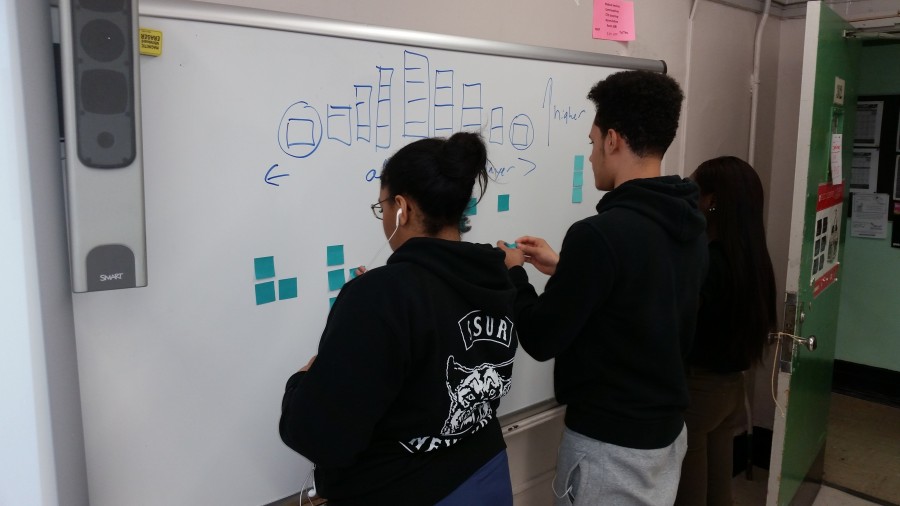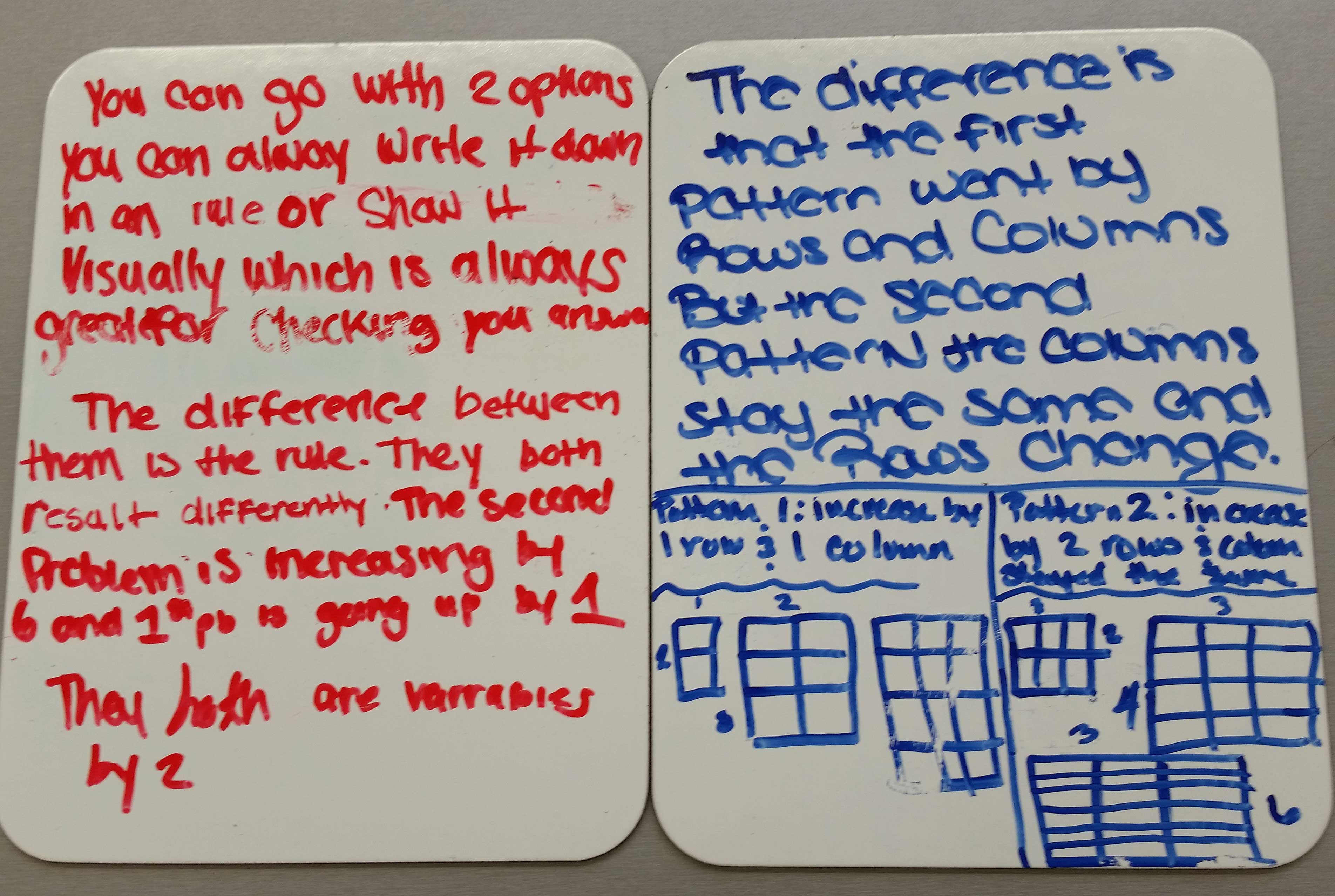A few weeks ago I tweeted this:
Does anybody know of a real reason why one would multiply two binomials #MTBoS
— Carl Oliver (@carloliwitter) March 14, 2016
This post will list a few of the interesting trends and what I ended up using with my class.
Perimeter-Area Tasks
The first assignments we did in the class revolved around the kids observing and talking about the patterns that they could see in visual patterns, and some instructional activities. These usually involve seeing some shape change as it grows from one iteration to the next.
Variables start appearing once students see that there are parts of the pattern that add on more shapes and use Length x Width, or the corresponding area formula, to make some kind of equation.
There are also area tasks that involve fixing dimensions, and then finding the area. Here’s an example from NRICH. If you give students a certain amount of fence and ask them to find the dimensions of the largest rectangle, or even other shapes, then result will be a quadratic function. The resulting function compares the variable x representing one changing side, to the area of the shape.
Changing-Rate tasks
Another type of tasks could involve changing rates, by that I mean a rate that is constantly changing. One relationship that was suggested via twitter was that ‘price x quanity = revenue’. So like if kids have a price, and then quantity is allowed to vary, then they could make a linear function to find the revenue based on the price. Well sure Carl, but how could that be a quadratic when you just showed it’s linear?” Well, what if the price depended on quantity as well? This is actually a real phenomenon, as the price of products typically go down as producers try to get you to buy more products. Then students would first have an equation that would make sense for price.
I made a task based around this principle that was talking about the ‘pay rate x hours = paycheck’ relationships for my old college job. As a dishwasher I was paid in both a constant, hourly rate, and a changing “tip share” that was handed out in increasing increments as I worked more hours. This meant that the worksheet shows a dishwasher with a pay rate that changes! It’s a pretty interesting situation to explore. Click below to see this task which both looks at the linear function for the pay rate after each hour, and also the quadratic function for total pay after working a number of hours.
I brought this up again in my final project, where kids make a cereal (This one will hopefully gets finished soon, and I will post it then). In my cereal project, I told kids they were going to design a $6.00 box of cereal, it could have a price that had to lower the price by half a penny everytime they wanted to produce more. So they have an equation for the price per box of 6 – .005Q = P. They and can make a revenue equation by multiplying price by quantity like before (6-.005Q)Q = R.
Projectile Motion Tasks
There a bunch of tasks where the kids are given an equation that models certain types of scenarios, and then they have to apply it to a specific situation. This could be using a graphing calculator to find the coefficients of a function that models a projectiles motion. This could be charting some real or recorded scenario where kids have to model the flight of balls, or catapult launched stuff, maybe even cornhole beanbags. At the end kids find the coefficients for an equation that uses the position vertically and horizontally. It’s also possible to find tasks that look at the relationship between time and height.
My Dream Task
In my mind I have a dream quadratics task that I wish existed but I wasn’t able to find it or figure it out. My dream task would be one where students come up with two linear equations related to the same context and then multiply them to find a new quadratic equation that makes sense in the context. This would mean they could draw all the graphs and see that for any x, they can look up and see the y-value from the two linear equations, and see the resulting product lying on the graph of the quadratic function. It seems like it could result in a whole bunch of connection-making and good mathematical discourse.
Have you seen a task like that before? Or any other good tasks? Let me know in the comments!




